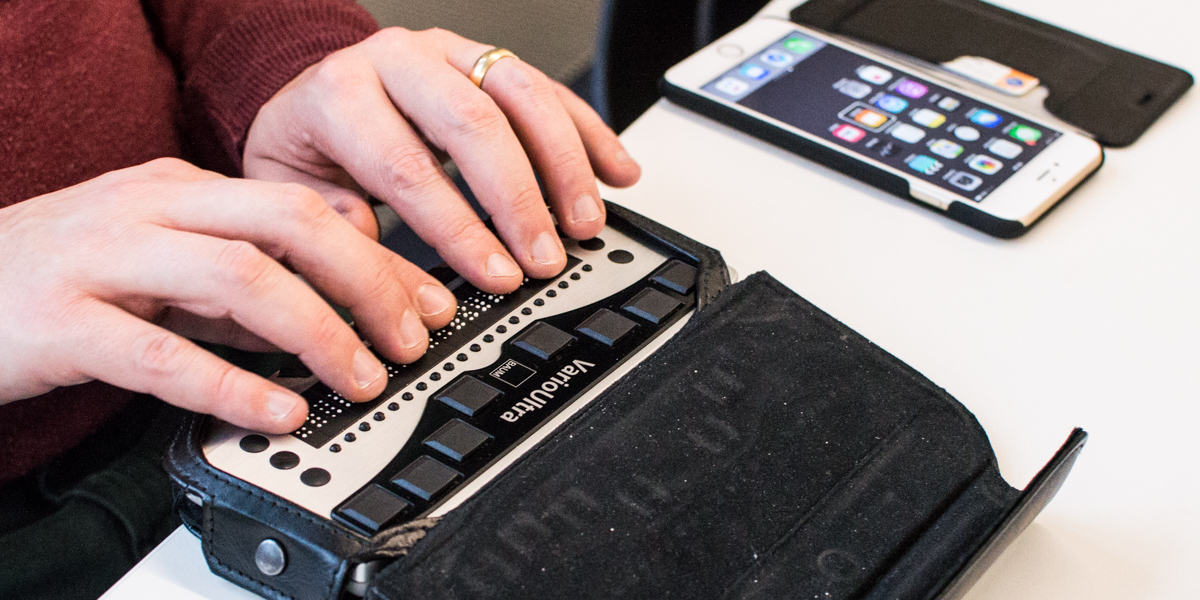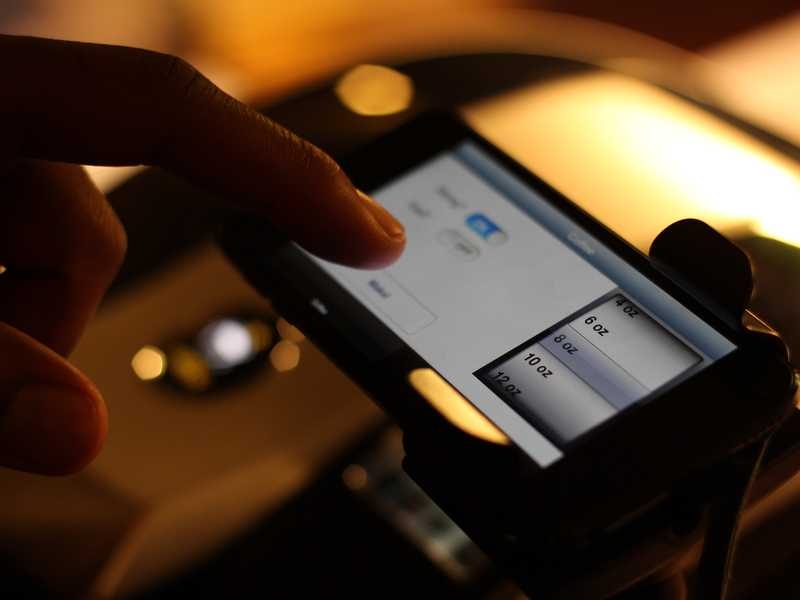Lightweight Technology for Low Vision: A Breakthrough in Accessibility
Lightweight Technology for Low Vision: A Breakthrough in Accessibility
Blog Article
Discover Innovative Devices Developed for the Visually Damaged
The development of cutting-edge tools for the aesthetically impaired stands for a significant development in ease of access and freedom. Technologies such as wise glasses with AI capabilities and mobile applications developed to offer acoustic summaries are improving everyday experiences for users. Furthermore, wearable devices that use haptic feedback boost environmental awareness, while contemporary Braille advancements offer new methods to involve with message. As these devices proceed to evolve, their influence on the lives of those with aesthetic impairments raises important questions concerning the future of inclusivity and freedom in numerous elements of life. What lies ahead in this technical landscape?
Smart Glasses for Navigation

Smart glasses made for navigation are revolutionizing the method visually impaired people interact with their setting. These sophisticated tools utilize a mix of cam modern technology, expert system, and acoustic feedback to supply real-time information concerning environments. By utilizing barrier detection systems, wise glasses can alert customers to possible risks, making it possible for much safer flexibility in both unfamiliar and familiar settings.
The combination of GPS technology further boosts navigating capacities, allowing individuals to receive auditory directions as they move. This hands-free technique not only cultivates independence however likewise encourages visually impaired individuals to browse urban landscapes with enhanced self-confidence. In addition, many clever glasses are geared up with attributes that recognize landmarks and road indicators, supplying contextual details that improves the user experience.
Additionally, the growth of these tools is consistently progressing, with firms functioning to improve the accuracy of item recognition and expand the variety of navigational features. As clever glasses end up being more available and cost effective, they hold the potential to dramatically change day-to-day live for visually damaged users. Eventually, these innovative devices stand for an essential action toward inclusivity, offering enhanced wheelchair and a higher sense of freedom for people navigating the world around them.

Mobile Apps for Daily Living
How can mobile applications boost the day-to-days live of visually impaired individuals? Mobile applications are revolutionizing the means aesthetically damaged customers browse their settings, manage daily jobs, and accessibility information. These applications offer important support through various functionalities, cultivating independence and improving high quality of life.
Several innovative mobile applications are created especially for day-to-day living. Applications like Be My Eyes connect visually impaired users with sighted volunteers by means of video calls, permitting them to receive real-time assistance with jobs such as checking out labels or navigating unfamiliar spaces. Likewise, Seeing AI, developed by Microsoft, uses expert system to describe environments, read message, and recognize things, efficiently transforming a smartphone right into an effective tool for everyday aid.
Furthermore, navigating apps customized for the aesthetically damaged, such as Aira and BlindSquare, use audio-based directions and ecological details, allowing customers to traverse their surroundings safely and confidently. Past navigating and instant assistance, mobile applications additionally sustain organization and job monitoring, with features that help customers establish suggestions, produce order of business, and track consultations. In summary, mobile applications serve as crucial resources, equipping visually damaged people to lead more independent and satisfying lives.
Wearable Technologies for Aid
Empowerment with modern technology is increasingly evident in the world of wearable tools designed to aid visually damaged individuals. These ingenious tools incorporate seamlessly right into everyday life, improving navigation and giving essential comments to customers. For example, smart glasses furnished with cams can recognize faces and check out text click to investigate aloud, permitting individuals to communicate more try this confidently in social and expert settings.
An additional remarkable advancement is making use of haptic comments systems in wearable gadgets. These systems use vibrations or other tactile signals to share info regarding the individual's atmosphere, such as challenges or adjustments in surface, boosting flexibility and safety and security. Wearable modern technologies additionally consist of wristbands that attach to smart devices, informing users to notifications via refined vibrations, thus improving connection without dependence on visual hints.
As these innovations continue to advance, they are not only boosting independence for visually impaired individuals but likewise fostering a higher sense of addition in society. By linking the space between challenges encountered in daily living and the possibility for freedom, wearable modern technologies function as crucial tools in the pursuit for equality and empowerment for those with aesthetic disabilities.
Audio Description Devices
Sound summary tools play a crucial duty in enhancing availability for aesthetically damaged individuals, giving them with the capability to involve with aesthetic media. Assistive technology for the blind. These devices provide narrated descriptions of vital visual aspects in movies, television shows, and live performances, making sure that users can completely understand the context and emotions shared via visuals
Audio description can be incorporated into various platforms, including streaming services, movie theater screenings, and live cinema. Many preferred streaming services now consist of audio description as an ease of access attribute, permitting customers to select it easily. In addition to traditional media, specialized applications additionally exist, supplying audio summaries for art events, museums, and other cultural events.
The performance of audio description pivots on the skill of the storytellers, that must communicate visual information succinctly without diminishing the initial audio. browse around this web-site Technologies in this field are additionally paving the method for even more tailored experiences, where users can adjust the degree of information and pacing according to their preferences.
Braille Innovations and Devices
Braille innovations and devices have dramatically transformed the method aesthetically damaged people engage with message and information. Modern innovations have led to the advancement of flexible devices that enhance literacy and independence amongst individuals.
In addition, mobile Braille notetakers combine conventional Braille input with modern capabilities, promoting note-taking, scheduling, and document modifying on the go. Speech-to-text devices for low vision. These compact gadgets typically feature text-to-speech capabilities, connecting the space between Braille and auditory info
Additionally, cutting-edge Braille printers have actually emerged, permitting users to produce Braille tags, files, and academic materials effectively. This ease of access cultivates higher participation in educational and expert atmospheres, inevitably promoting inclusivity.
Additionally, research study into smart Braille innovations continues to increase. Instruments that integrate expert system are being explored to supply real-time navigating help and contextual information, boosting the individual experience in diverse setups. In general, these advancements mirror a commitment to encouraging visually impaired people through modern technology, ensuring they can quickly gain access to and involve with the world around them.

Final Thought
The improvement of ingenious devices for the visually damaged significantly boosts self-reliance and high quality of life. Smart glasses, mobile applications, wearable technologies, audio summary devices, and Braille developments collectively empower individuals by providing crucial navigating aid, ecological awareness, and enhanced analysis experiences. These innovations not just foster higher inclusion but also advertise autonomy in everyday activities, eventually adding to a much more equitable and easily accessible society for visually damaged people. Proceeded growth in this field holds promise for further enhancements.
As wise glasses become more available and affordable, they hold the possible to considerably change daily life for aesthetically damaged individuals. Mobile applications are revolutionizing the method visually damaged users browse their settings, manage day-to-day jobs, and gain access to information. Apps like Be My Eyes link visually impaired individuals with sighted volunteers via video telephone calls, enabling them to get real-time assistance with tasks such as reviewing tags or browsing strange spaces.Additionally, navigation apps customized for the visually impaired, such as Aira and BlindSquare, supply audio-based instructions and environmental info, enabling customers to traverse their environments securely and confidently.The improvement of innovative tools for the aesthetically damaged significantly boosts self-reliance and high quality of life.
Report this page